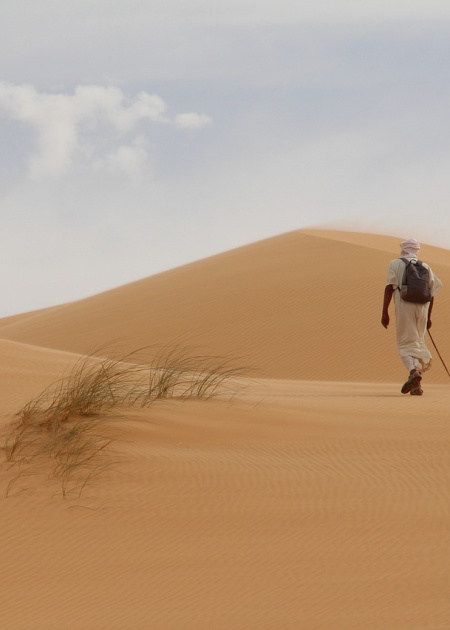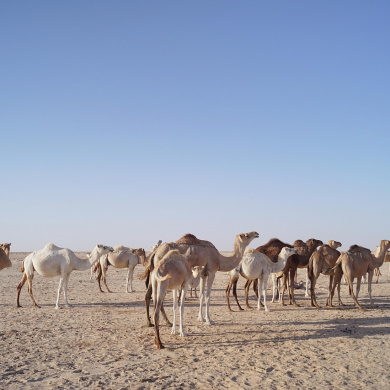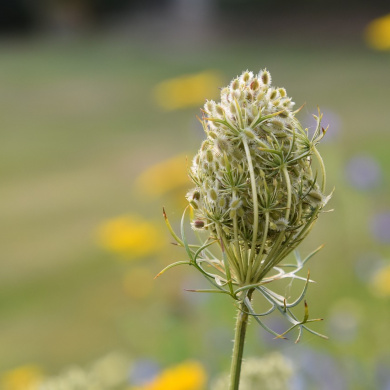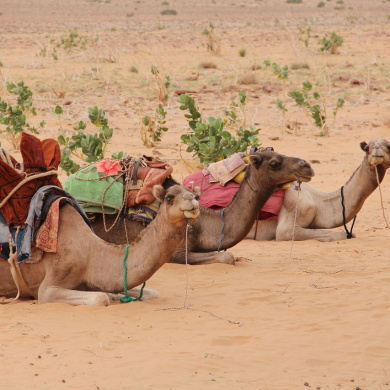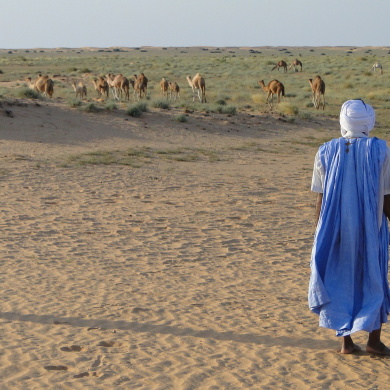Cost of living
The cost of living in Mauritania depends on a variety of factors, such as where you are located and your lifestyle. Generally, costs can range from very affordable to quite high. Basic items such as food and clothing are typically inexpensive, while more luxuries such as international travel, luxury goods, and restaurants can be quite costly.
Why travel to
Mauritania is an incredibly beautiful destination, with vast, unspoiled desertscapes, the stunning Strait of Atlantis, and some of the world's most incredible wildlife. There are unique desert fortresses to explore, traditional oasis towns, and captivating mosques along with some of the world's richest cultural heritage. The people of Mauritania are friendly and welcoming and guests to the country will find world-class hospitality and cuisine. It is an ideal destination for those who love adventure and want to experience cultures, stories and food they will never forget.
Safety
The U.S. Department of State currently warns against traveling to Mauritania due to crime, terrorism, and civil unrest. Certain regions of the country should be avoided.
Places to visit
- Banc d’Arguin National Park: This UNESCO World Heritage site is located in northern Mauritania and consists of lagoons, dunes, creeks and barrier islands. It is a breathtakingly beautiful nature reserve that is great for bird-watching and also provides local wildlife spotting opportunities.
- Nouakchott: This is Mauritania’s capital city and a great place to explore. It is home to various landmarks and cultural sites, as well as an interesting souk, or traditional market.
- Chinguetti: This is an old desert trading town located on the edge of the Sahara Desert. Here you can explore ancient mosques and ancient manuscripts, as well as the bustling marketplaces of the locals.
- Rosso: This colourful coastal town is situated between the towns of Saint Louis and Nouakchott. Here you can relax on the beach and explore the nearby mangrove swamps.
- Aleg: This city, which is located on the eastern fringe of Mauritania, is an ancient holy city. Filled with mosques and shrines, it is a great place to explore Mauritania’s culture and history.
- Ouadane: This important caravan trading town, located in the middle of the Sahara desert, is a great place to explore traditional Mauritanian culture and architecture.
Food to try
- Thiebou jen: A signature Mauritanian dish made with couscous, fish or beef, and vegetables.
- Mauritanian Soup: Made with beef, vegetables, and occasionally fruit, this spicy soup is best served with traditional flatbread.
- Poulet yassa: A stew made with chicken, onion, and olives, seasoned with garlic and spices.
- Chakhchoukha: A thick stew made with egg and vegetables, usually served with flatbread.
- Breads: This region is famous for its savoury flatbreads, including masksu (dough flavoured with chervil and caraway), mkhamer (a dense flatbread filled with dates, honey, and sesame seeds), and beghrir (a peppery pancake-like bread).
- Dates & Fruits: There is a wide range of local fruits, including figs, pomegranates and dates. Try them fresh, stewed or transformed into a sweet paste.
- M`semen: A popular breakfast item, made with flour, semolina, and butter, and topped with sugar, honey, or dried fruits.
Souvenirs
- Carpet. The carpets of Mauritania are known for their vibrant colours and intricate designs. Made of wool or goat hair, they are a perfect souvenir to take home and will add a touch of culture to any home décor.
- Handmade Jewellery. Traditional jewellery of Mauritania includes both everyday jewellery and ceremonial jewellery, the latter being heavy and elaborate. The bracelets, rings, necklaces and earrings are designs to both enhance a garment and showcase age-old tribal symbolisms.
- Traditional Silverware. Silverware is one of the oldest crafts of the African continent and is still popular in Mauritania. This type of jewellery is a perfect gift and presents ideal decorations for any home.
- Berber Carvings. Fashioned from wood and stone, Berber carvings (also known as “tamar”) are known for their skillfully carved designs and abstract motifs. These carvings are often used in ceremonies, or just to decorate homes.
- Leather Goods. Leather goods, including wallets, shoes, bags, and purses, are made with precision and skill in Mauritania. Hand-crafted with beautiful grains and colours, they are the perfect souvenir and will last a lifetime.
- Daggers. Called bindi, these traditional daggers are crafted by hand with intricate designs etched into the handle and blade. They are similar in length to swords and are part of the traditional male costume in Mauritania.
- Clothing and Textiles. Traditional Mauritanian clothing is often made of intricately patterned and coloured fabric. That’s why visitors coming from Mauritania often take home some of these items as souvenirs.
- Musical Instruments. Music and singing are essential parts of Mauritanian society and culture. Flutes, drums, and string instruments – such as the lute, fiddle and harp – are great souvenir items that will provide hours of musical entertainment.
- Spices. Mauritania is famous for its pungent spices, with fiery blends that have been passed down through centuries. Popular spices like saffron, ginger, and black pepper, are perfect souvenirs to remember the country’s amazing flavour discoveries.
- Pottery. Impressively crafted pottery items, such as dishes and platters, are traditional crafts that can be picked up throughout Mauritania. Superbly designed in a variety of colours, they make an attractive souvenir.
